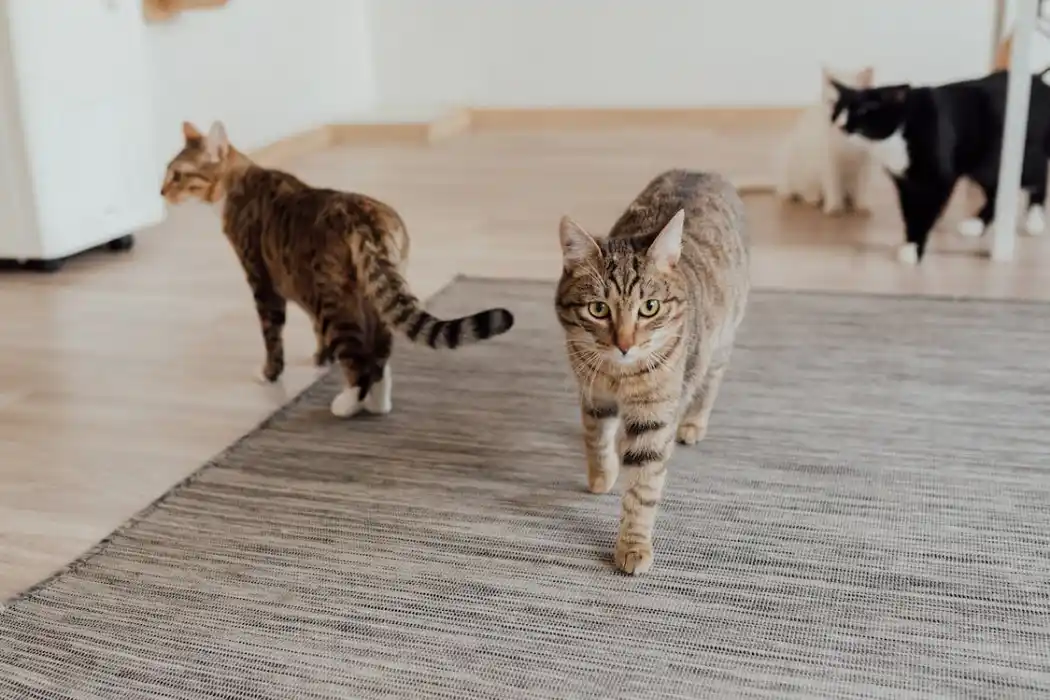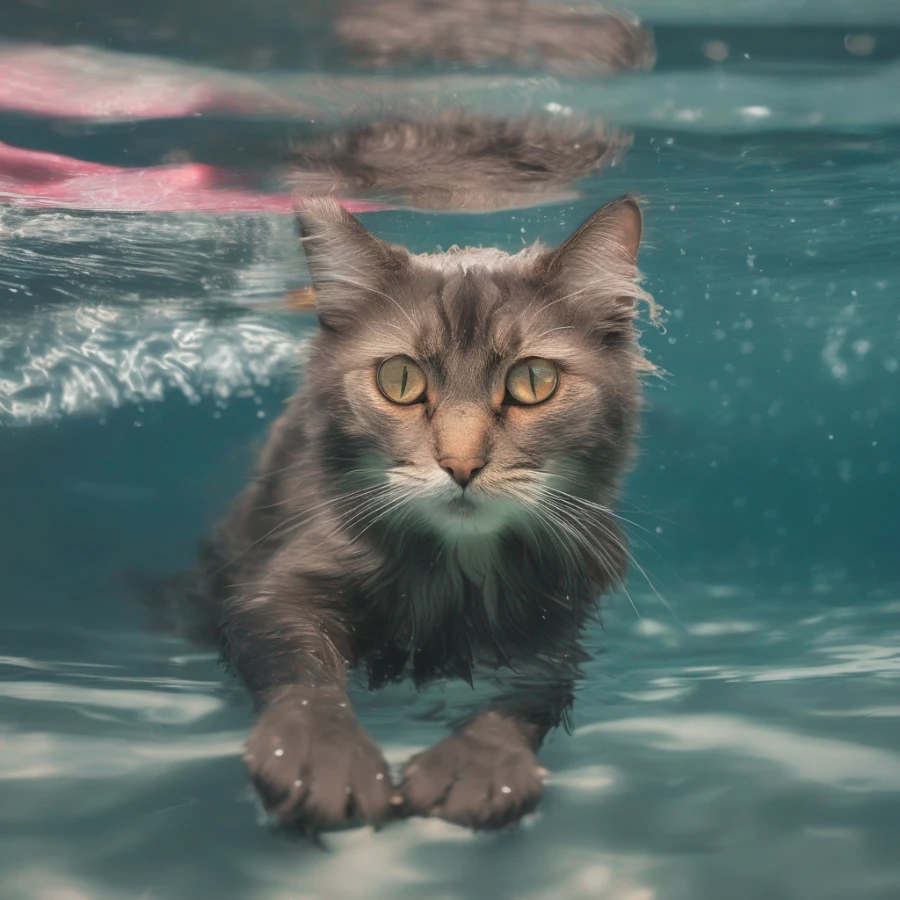Why is my cat walking around meowing

Published by: CatsLib
4 Min Read
Attention-Seeking: Cats are known for seeking attention from their owners. If your cat is meowing and walking around you, it might be trying to get your attention for playtime, petting, or food.
Hunger: Cats often meow to signal that they're hungry. If it's around mealtime, your cat might be letting you know that it's time to eat.
Stress or Anxiety: Changes in the environment, such as new people, pets, or rearranged furniture, can lead to stress for some cats. Meowing and pacing might be signs of anxiety.
Medical Issues: Cats sometimes vocalize more if they're in pain or discomfort due to an underlying medical issue. If your cat's behavior is unusual and persistent, it's a good idea to consult a veterinarian to rule out any health concerns.
Boredom: Cats can become restless if they're not mentally or physically stimulated. Interactive play and toys can help alleviate boredom.
Seasonal or Reproductive Behavior: Unspayed female cats might exhibit increased vocalization and restlessness when they're in heat, as a way to attract male cats.
Aging: Senior cats might develop cognitive changes that can lead to increased vocalization and wandering behavior.
Attention to Territory: Some cats might meow and walk around as a way to mark their territory, especially if they sense other animals nearby.
Communication: Cats use meowing to communicate with humans, other cats, and sometimes even with themselves. They might be expressing their emotions or trying to convey a message.
Social Interaction: Cats are social animals that may meow and walk around as part of their social interactions. This could be a form of communication between cats in a multi-cat household.
To address this behavior, it's important to observe your cat's overall health and environment. Make sure your cat is getting enough mental and physical stimulation through play, provide a balanced diet, maintain a consistent routine, and offer a safe and comfortable environment. If the behavior continues or seems unusual, consider consulting your veterinarian to rule out any underlying medical or behavioral issues.
Why do cats walk in front of you
Cats walking in front of you is a behavior that can have a few different motivations, often rooted in their natural instincts and communication methods. Here are a few reasons why cats might exhibit this behavior:
Attention-Seeking: Cats are skilled at getting their owners' attention, and walking in front of you is a way to do just that. By positioning themselves in your path, they are more likely to catch your eye and possibly prompt you to interact with them.
Curiosity: Cats are naturally curious creatures. When they walk in front of you, they might be interested in what you're doing or where you're headed. It's their way of exploring their environment and staying engaged.
Bonding and Affection: Cats often have strong bonds with their human caregivers. Walking in front of you can be a sign of their affection and desire to be close to you.
Guiding or Leading: In some cases, cats might walk in front of you as if they're leading you somewhere. This behavior can be seen in outdoor or hunting situations, where a cat might try to guide its owner toward something it finds interesting.
Communication: Cats communicate through body language, and walking in front of you can be a way for them to convey their needs or desires. They might want food, attention, or access to a certain area.
Playfulness: Cats have a playful nature, and their behavior can be a way to engage you in a game or interaction. They might dart in front of you to initiate play.
Exploration: Cats use scent marking to navigate their surroundings and establish territory. By walking in front of you, they might be scent-marking the path, leaving their scent on objects and surfaces as they move.
Routine and Anticipation: Cats are creatures of habit, and they often learn to anticipate certain activities or events. If your cat knows that you're going to a specific location (like the kitchen for feeding), they might walk in front of you out of excitement or anticipation.
Traffic Control: In multi-cat households, the cat walking in front might be asserting its status or trying to establish order in a social hierarchy by controlling the movement of others.
It's important to observe your cat's body language and context to better understand their behavior. While walking in front of you is generally harmless and often quite endearing, it's essential to ensure that your cat is safe and not underfoot, especially if you're carrying something heavy or moving quickly. Always take your cat's well-being into consideration and interact with them in a positive and gentle manner.

Why does my cat always follow me
Cats exhibit the behavior of following their human caregivers for a range of intriguing reasons, each offering a glimpse into their complex nature. This tendency to tag along can often be a manifestation of their strong emotional bond and affection towards you. When your cat follows you, it's not just about physical proximity; it's a demonstration of their attachment and desire to maintain a close connection. Their inquisitive nature plays a significant role as well. Cats are inherently curious creatures, and your movements and actions pique their interest. By shadowing you, they're able to explore their environment in a way that's influenced by your presence and activities.
In addition to curiosity, this behavior can also stem from a sense of anticipation. Cats are creatures of habit and thrive on routine. If they've come to associate specific activities or events with your movements, they might follow you as a signal that they're ready for the next anticipated event, whether it's playtime, mealtime, or some other engaging interaction. Furthermore, the act of following you can provide them with a sense of security and comfort. Your presence offers reassurance, and by sticking close, they may feel more at ease knowing you're there to provide protection and companionship. It's a testament to the trust they've developed in you as their caregiver and friend.



